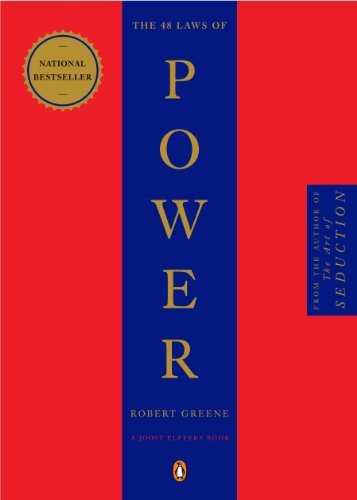

This article is an excerpt from the Shortform summary of "The 48 Laws of Power" by Robert Greene. Shortform has the world's best summaries of books you should be reading.
Like this article? Sign up for a free trial here .
Overview of Law #3: Conceal Your Intentions
Always conceal your intentions. If you keep people off-balance and in the dark, they can’t counter your efforts. Send them down the wrong path with a red herring or create a smokescreen and by the time they realize what you’re up to, it will be too late for them to interfere.
Principle #1 of Law 3: Use Decoys and Red Herrings
To conceal your intentions, take preemptive action to mislead by using decoys and red herrings. Use tools such as fake sincerity, ambiguity, and lures — and people won’t be able to differentiate the genuine from the false to see your goal.
Many people wear their feelings on their sleeves. And when it comes to plans and intentions, they’re quick to tell all at the slightest provocation.
People tend to be “open books” because talking about feelings and intentions comes naturally. Watching your mouth — monitoring and controlling what you say — takes effort. In addition, they believe honesty and openness will win people over.
However, honesty has distinct downsides:
- Rather than being an appealing characteristic, honesty is likely to offend people. It’s often better to tell people what they want to hear rather than the less flattering truth.
- If you’re totally honest and open, people won’t respect or fear you because you’ll be predictable (to wield power, you need others’ respect and fear).
In contrast, you can gain and maintain the upper hand by concealing your intentions. Fortunately, concealing your intentions is easy because it’s human nature to trust appearances; the alternative of doubting the reality of what you see and hear — imagining there’s always something else behind it — is too exhausting.
So present a decoy or red herring — something phony that’s intended to attract attention and thus mislead — and people will take the appearance for reality, and won’t notice what you’re really doing.
For instance, you can divert attention from your true goals by making it look as though you support an idea or cause you previously opposed publicly. Most people will believe you had a true change of heart because people don’t usually change sides frivolously.
Conversely, you can pretend to want something you’re not actually interested in, and your opponents will be confused and miscalculate.
In 1711 the Duke of Marlborough, head of the English army, wanted to destroy a French fort because it blocked the route he wanted to use to invade France. His decoy was to capture the fort and add some soldiers, to make it look like he wanted to maintain and strengthen the fort. The French attacked and he let them recapture it. When they had it back, they destroyed it to keep it out of the duke’s hands. Once it was gone, the duke marched easily into France. This is the advantage of concealing your intentions.
Try False Sincerity to Conceal Your Intentions
Besides broadcasting a fake goal, you can use false sincerity as a red herring to throw people off the scent. People are likely to mistake it for honesty, because they trust appearances and want to believe others are honest. Appearing to believe what you say adds authority to your words.
For example, Iago destroyed Othello by appearing to be deeply concerned about Desdemona’s supposed infidelity. Othello trusted his false sincerity. Don’t overdo your fake sincerity, however, or you’ll arouse suspicions.
To make it even more effective, publicly stress the importance of being honest as a social value. Underscore your supposed honesty by revealing something seemingly personal (but fake or irrelevant) once in a while.
Putting Decoys to Work to Conceal Your Intentions
Otto von Bismarck, as a deputy in the Prussian parliament, succeeded in his aim of going to war by using a decoy.
In the mid-1800s, the country debated unifying many states into one, and/or going to war against Austria, which was trying to keep Germany divided and weak. King Frederick William IV, and his ministers opposed war, preferring to appease Austria. But Prince William and most Prussians favored it.
Bismarck also favored war, as everyone knew. But he thought it was the wrong time to fight — Germany needed time to strengthen its army. So to distract Austria and others from his true goal he gave a speech against war and even praised Austria.
Everyone was confused, but war was averted for the moment, and the king made him a cabinet minister, which positioned him to start strengthening the army and developing political allies. Eventually, Bismarck became Prussian premier and led the country to defeat Austria and unify Germany. Bismarck knew the value of concealing your intentions.
Principle #2 of Law 3: Use Smokescreens
The second sub-law of 48 Laws of Power Law 3: Conceal your intentions, is to use smokescreens. An effective way to deceive people is to conceal your intentions behind a comfortable and familiar facade — a smokescreen that you create. One of the most effective smokescreens is assuming a bland expression and manner. It lulls your target into complacency and he doesn’t notice he’s heading into a trap.
You might expect skillful deceivers to be charismatic people who use elaborate stories to mislead. But the best deceivers create a mild, low-key front.
Use familiar scenarios and actions — a smokescreen — to lull your targets into complacency and trust. Once you get the sucker’s attention with something familiar, he won’t notice the real deception. It works because people can focus on only one thing at a time. They don’t suspect that the innocuous person they’re dealing with is setting them up for a fall.
By contrast, a decoy is set up to attract your attention in an obvious way, as opposed to the way a smokescreen essentially lulls you to sleep or into a state of inattention.
The simplest form of smokescreen is a blank facial expression.
For example, in negotiations, Secretary of State Henry Kissinger used a monotonous voice, blank expression, and repetition of details to lull those he negotiated with — then suddenly he would unveil a list of forceful demands, catching them off guard and intimidating them. Kissinger knew that to get what you want, you need to conceal your intentions.
Smokescreen Tactics to Conceal Your Intentions
Smokescreens can be employed in several ways, using psychological weaknesses to achieve distraction and misdirection:
1) Make a seemingly noble gesture: People like noble gestures — they create good feelings all around. People want to believe they’re genuine, and miss the fact that a noble gesture can conceal other purposes.
For example, the creation of the National Gallery of Art in Washington, D.C., in 1937 looked like a noble gesture by wealthy people who donated their paintings.
However, there was more to it. An art dealer, Joseph Duveen, helped create the museum by getting Andrew Mellon to donate his collection to it; other donors followed. But in reality, Duveen was solving another problem. He was having trouble selling more paintings because rich buyers were running out of display space in their mansions. Getting others to donate their paintings was a smokescreen to solve Duveen’s problem by clearing wall space for more purchases from him. The donations also reduced the number of paintings on the market, which pushed up prices.
2) Create a pattern that serves as a smokescreen. Do a series of things that convince your target you’re going in a particular direction. This is a great way of concealing your intentions. Psychologically, people expect behavior to follow patterns; when they identify a pattern, they feel comfortable anticipating the next step. Then you catch them off guard by breaking the pattern (which achieves your real purpose). You’ve lulled them into expecting the opposite of what you’re really intending.
For example, In 1878, robber baron Jay Gould intended to take over the telegraph company Western Union. He succeeded by first creating a pattern of events that served as a smokescreen, distracting attention from his purpose. He created a company that competed with Western Union, so the bigger company’s directors bought him out. Gould then started another competing company and Western Union bought out that one too. He’d set up a now-familiar pattern of seeming to want payoffs, and Western Union directors were caught off guard when he launched his successful takeover bid.
3) Exploit the human tendency to mistake appearance for reality. Seem to blend into a group. If you do it well, you won’t arouse suspicions and can use your cover to pursue your real purpose. For example, during the Cold War, British civil servants went undetected as they passed secrets to the Soviets. It worked because they fit seamlessly into the old-boy establishment. Blending in is a time-honored smokescreen for spying.
Creating a bland persona and making yourself inconspicuous requires patience and restraint (you have to suppress the urge to brag or stand out in any way). But your inscrutability creates an impression of power.
Putting Law 3 to Work, Example #1
Joseph Weil, an early 1900s con artist known as The Yellow Kid, used a purported business deal to lure Chicago businessman Sam Geezil into an elaborate trap. Geezil thought he was participating in a deal in which he would buy property from a group of wealthy men at a low price, then resell it at a high price and split the proceeds with his supposed co-conspirator, Weil.
As the “deal” was being wrapped up at a meeting with the wealthy property owners, Weil introduced his real purpose — a scheme to defraud Geezil by getting him to bet the money he was using to buy the property on a boxing match, which Weil would fix. The match was indeed fixed, but in a different way — the boxer who was supposed to win took a supposedly errant punch and didn’t get up. Fearing that the boxer had been killed and not wanting to be implicated in a crime, Geezil fled the scene, leaving his money behind. But Weil had faked the boxer’s death, and he and the others kept Geezil’s money.
The purported business deal was the smokescreen to distract Geezil’s attention and lull him into complacency.
Putting Law 3 to Work, Example #2
In the 1920s, a young Ethiopian leader, Haile Selassie, used apparent innocence to disarm a military leader who conspired against him.
He invited the military leader Balcha to a banquet. Balcha brought along his army, which he parked outside the capital before proceeding to the banquet with 600 elite soldiers. Selassie was charming and deferential, and Balcha thought he could be easily deposed.
However, when Balcha headed back to his camp to plan Selassie’s ouster, he discovered his troops were gone. While Salassie had distracted Balcha with the banquet, Selassie’s troops surrounded Balcha’s army. They bought up the weapons with gold, and Balcha’s forces scattered. Balcha surrendered and agreed to enter a monastery. This is the power of concealing your intentions.
Exceptions to Law 3
Are there any exceptions to 48 Laws of Power Law 3: Conceal your intentions? Diversionary tactics don’t work if you’re already known to be a deceiver. The more success you’ve had in the past, the harder it is to continue disguising your intentions. To overcome this hurdle, admit your past behavior and pretend to be repentant. You may be admired for your candidness, and you can continue your deceptions
Diversionary tactics don’t always have to be subtle — occasionally a conspicuous gesture is effective. For example, the charlatans of 17th- and 18th-century Europe put on huge circus-type shows, using humor and entertainment to distract from their purpose, which was to sell quack potions and elixirs.
However, spectacles have limits: Eventually, the public catches on to the purpose. And so when they’d worn out their welcome, the charlatans moved on to the next town. By contrast, you can employ the mild-mannered demeanor to deceive people indefinitely.
Remember Law 3: Conceal your intentions!
———End of Preview———

Like what you just read? Read the rest of the world's best summary of "The 48 Laws of Power" at Shortform . Learn the book's critical concepts in 20 minutes or less .
Here's what you'll find in our full The 48 Laws of Power summary :
- Why you should never outshine your boss
- How to appear like a friend but behave like a spy
- The 6 rules you absolutely must not violate, if you want to be successful







Is it possible to buy a proper version of the book?
This helped me a lot but still if there is any possible way of Buying the book, can it be possible?
“You have no friends and you have nothing to hide… because no one is paying attention.”